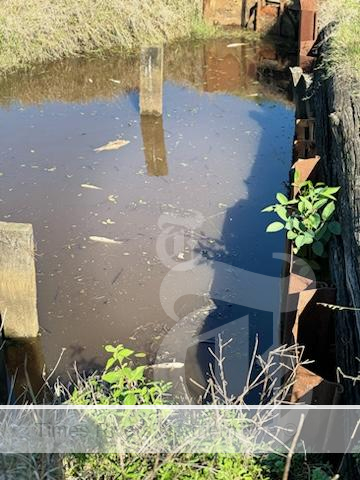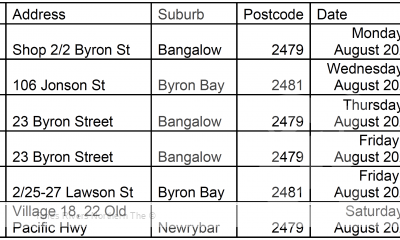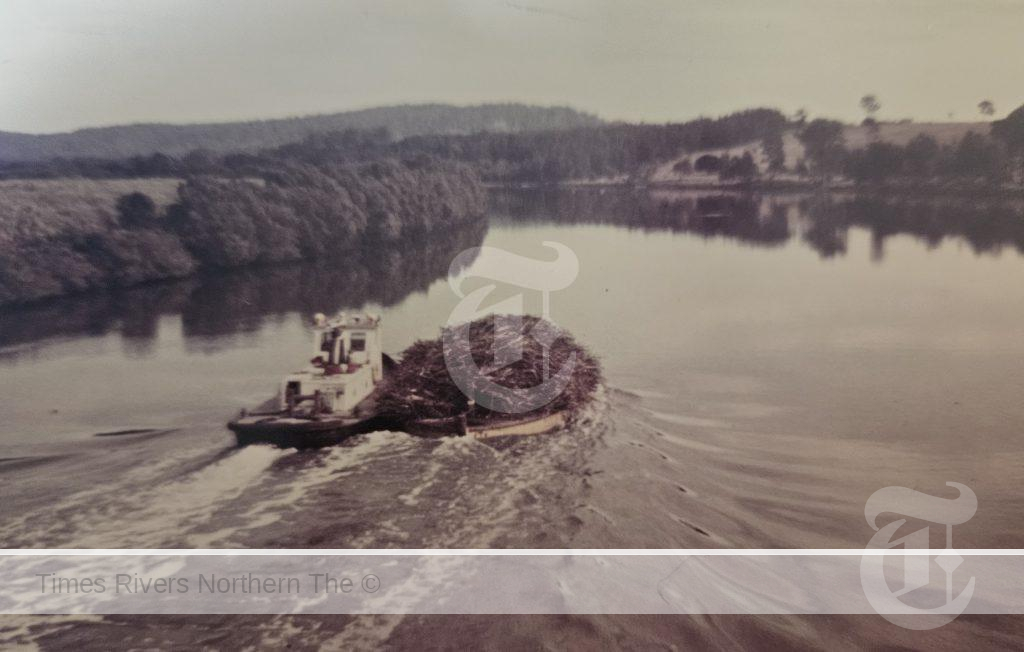Most recent fish kill points to an unhealthy river
By Samantha Elley
One Woodburn farmer has raised the alarm of a recent fish kill that occurred at Rocky Mouth Creek a few weeks ago.
Wanting to stay anonymous, he said the death of more than 100 mullet, carp and herring happened just before the most recent rain event.
“It was definitely in the hundreds,” he said.
“Up until that kill, the fish out the front of my place would keep me awake at night, as they swirl around.”
His concern was the timing of the closing and opening of the flood gates in Rocky Mouth Creek.
“The gates were closed, but there was an outlet for the fish to get through. Why were all fish killed above the weir and not below?” he said.
He indicated that the outlet for the fish could not accommodate them as they tried to move through the river system.
A NSW DPI spokesperson confirmed the fish kill.
“On 3 April 2024, NSW DPI received a report of a fish death event at Rocky Mouth Creek, near Woodburn affecting just over 100 fish,” they said.
“DPI Fisheries Officers have attended the site and attributed the cause of the event to a drop in Dissolved Oxygen (DO) due to a hypoxic blackwater event from a breakdown in organic material.”
Fish kills are defined as a sudden mass mortality of wild fish, according to DPI’s website and are more likely to occur in summer or when there are sudden changes in temperature.
Since October last year there have been five reported fish kills, including the one at Woodburn and another at Ballina on January 13 where thousands of mullet died in the Richmond River to a hypoxic blackwater event.
A hypoxic blackwater event is where organic material, such as leaf litter and woody debris, is washed into the river and its rapid decay consumes dissolved oxygen from the water. The lack of dissolved oxygen in the water can lead to fish kills.
The issue of fish kills is a complex one, according to a spokesperson from Rous County Council.
“Historically, the floodplain has been intensively drained and floodgated for flood mitigation and to allow agriculture to expand,” they said.
“Rous has now inherited responsibility for a large network of historical drainage infrastructure, including the Rocky Mouth Creek floodgates.”
The spokesperson said the floodgate’s primary role is to mitigate the impact of floods on properties upstream, so this is when they are lowered.
“However, when the floodgates aren’t needed for flood mitigation, with the support of surrounding landowners, they can be raised up to allow water to flow up and down the creek, which improves the condition of the waterway,” they said.
“Keeping the floodgates open doesn’t prevent blackwater from being created (as this happens) upstream in low lying areas where grass and other vegetation is flooded and rots.”
Rous County Council has confirmed in a study done by the state government called Coastal Floodplain Prioritisation Study of the Richmond River, that for meaningful improvements to occur in blackwater creation within Rocky Mouth Creek, low lying areas need to be returned to natural swamp and wetland and artificial drainage systems removed.
Floodplain officer Chrisy Clay said the flood mitigation assets owned by Rous County Council are largely historical.
“There was a lot of flood mitigation assets put in place in the 1950s and 60s following the 1954 flood,” she said.
“The late 1800s, early 1900s we had a lot of assets already in place.
“They’re there to reduce the impact of floods…this has been essential for the establishment and expansion of agriculture and the rural settlement of the flood plain.
“Unfortunately, what we didn’t know at the time is that there would be unintended environmental consequences from those works.”
Ms Clay said the very fundamental characteristic of the flood plain has now changed and there isn’t an aspect that hasn’t been altered.
“The hydrology has been completely altered,” she said.
“And that has completely altered the vegetation types, the biodiversity and ecosystems we have there.
“They’ve also impacted on water quality both on the drainage system and in the estuary itself.”
Vegetation types such as reeds and rushes and wetland plants would have been suited to inundation.
“But now we’ve changed them by draining them and the main vegetation type is dryland pasture which starts to decompose and rots during inundation,” said Ms Clay.
She said the worst fish kills she has seen was firstly in 2001 at Wardell.
“The entire estuary had no dissolved oxygen left in it…and nothing can live in that,” she said.
“We had all levels of the food web…die en masse. Fish, crustaceans, oysters, sea grass, prawns…they all died.”
Then in 2008 there was another major fish kill in the Richmond River estuary.
Ms Clay said there was an unfortunate cycle of water quality issues in the area.
“This is why the Richmond River’s been classified as the most degraded and worst in NSW,” she said.
“Tackling issue of black water is…complicated.
“The science says that how we rectify that is reducing the drainage of these areas.
“Unfortunately, the only mechanism we have for change is through the goodwill of landowners.”
Ms Clay said the changes that need to occur are likely to have a negative impact on their land in regards to agriculture and land value.
“It’s very difficult to garner support we need to have occur from good will alone,” she said.
For more Richmond Valley news, click here.





 Tweed Shire News2 years ago
Tweed Shire News2 years ago
 Motoring News1 year ago
Motoring News1 year ago
 COVID-19 Northern Rivers News3 years ago
COVID-19 Northern Rivers News3 years ago
 COVID-19 Northern Rivers News3 years ago
COVID-19 Northern Rivers News3 years ago
 Northern Rivers Local News3 years ago
Northern Rivers Local News3 years ago
 Health News3 years ago
Health News3 years ago
 COVID-19 Northern Rivers News3 years ago
COVID-19 Northern Rivers News3 years ago
 NSW Breaking News3 years ago
NSW Breaking News3 years ago


























